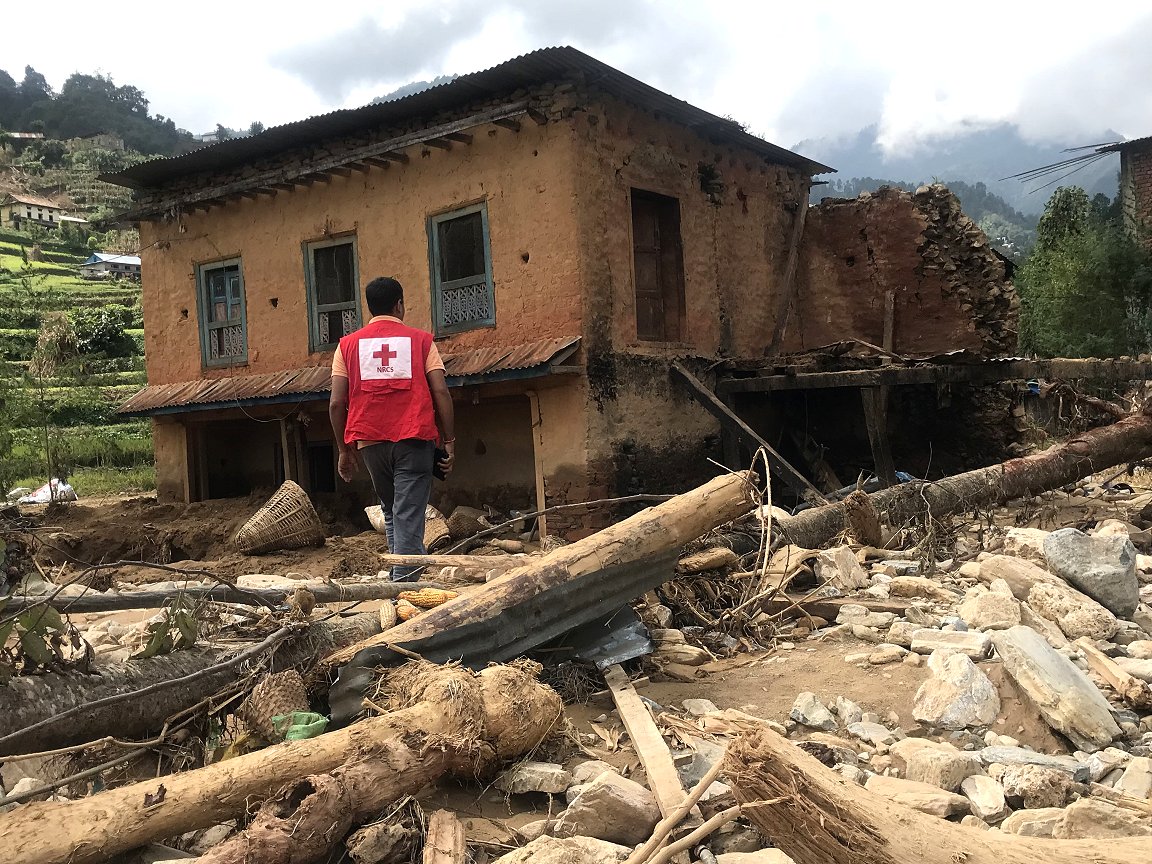
Climate change made downpours behind deadly Nepal floods 10% more intense – Study

By the Climate Centre
The lethal late September floods in Nepal were caused by rainfall made about 10 per cent more intense by climate change, according to the latest rapid analysis by World Weather Attribution scientists issued yesterday.
The study highlights the “urgent need to limit development in low-lying, riverside areas of cities and scale up early warning and early action,” a WWA press release says.
Records were broken across central and eastern Nepal last month, with some weather stations recording in a single day the equivalent to about half the total annual rainfall in the British capital, London, well known for its generally rainy climate.
The downpours filled streams and, especially, the Bagmati, Sapakoshi, Narayani, Sardu, Rew and Nakkhu rivers and their tributaries, already brimming over after months of the regular monsoon.
The subsequent floods and landslides killed more than 200 people, displaced thousands more, destroyed hundreds of homes, damaged hydropower plants, and washed away roads and bridges and other key infrastructure.
Roshan Jha, a researcher at the Indian Institute of Technology Bombay, said: “These floods turned the streets of Kathmandu into raging rivers. Clearly, climate change is no longer a distant threat in Asia.
“With every fraction of a degree of warming, the atmosphere can potentially hold more moisture, leading to much heavier downpours and catastrophic floods like these.”
‘Clearly, climate change is no longer
a distant threat in Asia’
The study was conducted by 20 scientists from universities and meteorological agencies in Nepal, India, Sweden, the UK and the US.
Maja Vahlberg, a Technical Adviser at the Climate Centre and one of the joint authors, said today: “This study underscores why Nepal is one of the most vulnerable countries in the world to climate change.
“Minimizing the construction of homes in unsafe, flood-prone areas will help reduce the impacts of future floods there.
“We also know that people who can’t read, a disproportionate number of them women in Nepal, are especially vulnerable to floods as they miss out on information to prepare – so improving education and reducing inequality is vital to make people more resilient to climate change.”
In its immediate response, over 200 Nepal Red Cross personnel worked closely with the authorities on evacuation and search and rescue, and the distribution of essential supplies. The Red Cross was also involved in clearing roads and restoring vehicle access, especially in mountainous areas that saw landslides.
IFRC-DREF issued a humanitarian grant of more than 500,000 Swiss francs to enable the Nepal Red Cross to assist 20,000 people affected by the disaster; as of the beginning of this month, the National Society had distributed emergency relief from prepositioned stocks to nearly 5,000 people.
The Nepal study is the fourth this year by WWA to find that an Asian flood and/or associated wind and landslides have been worsened by climate change, along with Typhoon Gaemi in the western Pacific, northern Kerala in India, and the UAE and Oman.
The Nepal Red Cross last month distributed relief supplies here village in Bethanchowk municipality, where around 50 houses and most infrastructure were completely or partly destroyed. (Photo: Danish Red Cross)